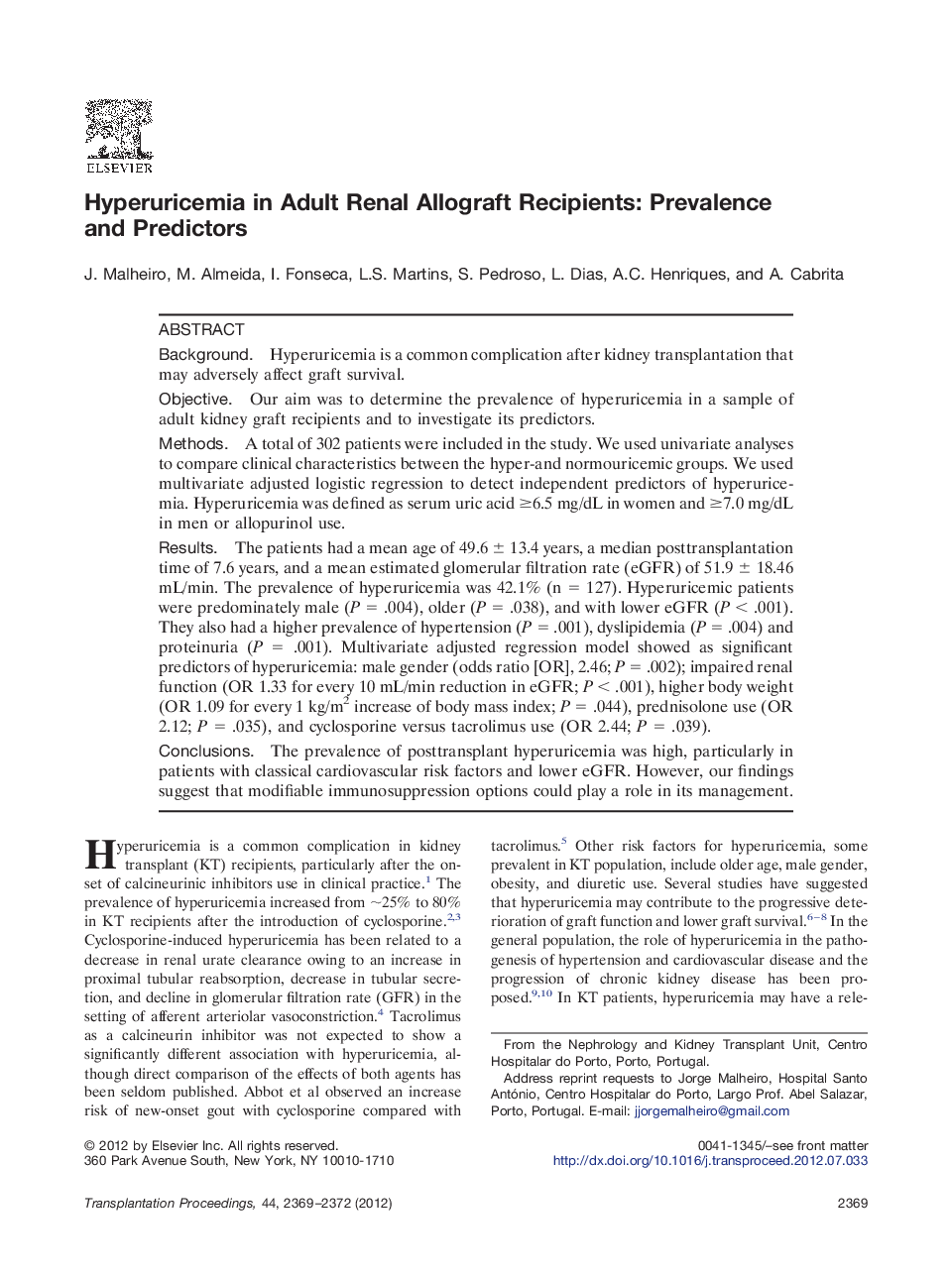| کد مقاله | کد نشریه | سال انتشار | مقاله انگلیسی | نسخه تمام متن |
|---|---|---|---|---|
| 6248027 | 1284524 | 2012 | 4 صفحه PDF | دانلود رایگان |

BackgroundHyperuricemia is a common complication after kidney transplantation that may adversely affect graft survival.ObjectiveOur aim was to determine the prevalence of hyperuricemia in a sample of adult kidney graft recipients and to investigate its predictors.MethodsA total of 302 patients were included in the study. We used univariate analyses to compare clinical characteristics between the hyper-and normouricemic groups. We used multivariate adjusted logistic regression to detect independent predictors of hyperuricemia. Hyperuricemia was defined as serum uric acid â¥6.5 mg/dL in women and â¥7.0 mg/dL in men or allopurinol use.ResultsThe patients had a mean age of 49.6 ± 13.4 years, a median posttransplantation time of 7.6 years, and a mean estimated glomerular filtration rate (eGFR) of 51.9 ± 18.46 mL/min. The prevalence of hyperuricemia was 42.1% (n = 127). Hyperuricemic patients were predominately male (P = .004), older (P = .038), and with lower eGFR (P < .001). They also had a higher prevalence of hypertension (P = .001), dyslipidemia (P = .004) and proteinuria (P = .001). Multivariate adjusted regression model showed as significant predictors of hyperuricemia: male gender (odds ratio [OR], 2.46; P = .002); impaired renal function (OR 1.33 for every 10 mL/min reduction in eGFR; P < .001), higher body weight (OR 1.09 for every 1 kg/m2 increase of body mass index; P = .044), prednisolone use (OR 2.12; P = .035), and cyclosporine versus tacrolimus use (OR 2.44; P = .039).ConclusionsThe prevalence of posttransplant hyperuricemia was high, particularly in patients with classical cardiovascular risk factors and lower eGFR. However, our findings suggest that modifiable immunosuppression options could play a role in its management.
Journal: Transplantation Proceedings - Volume 44, Issue 8, October 2012, Pages 2369-2372